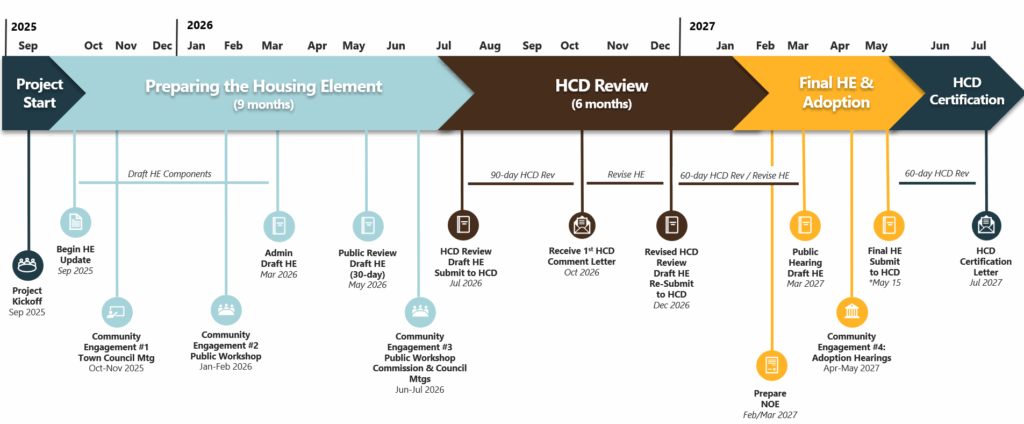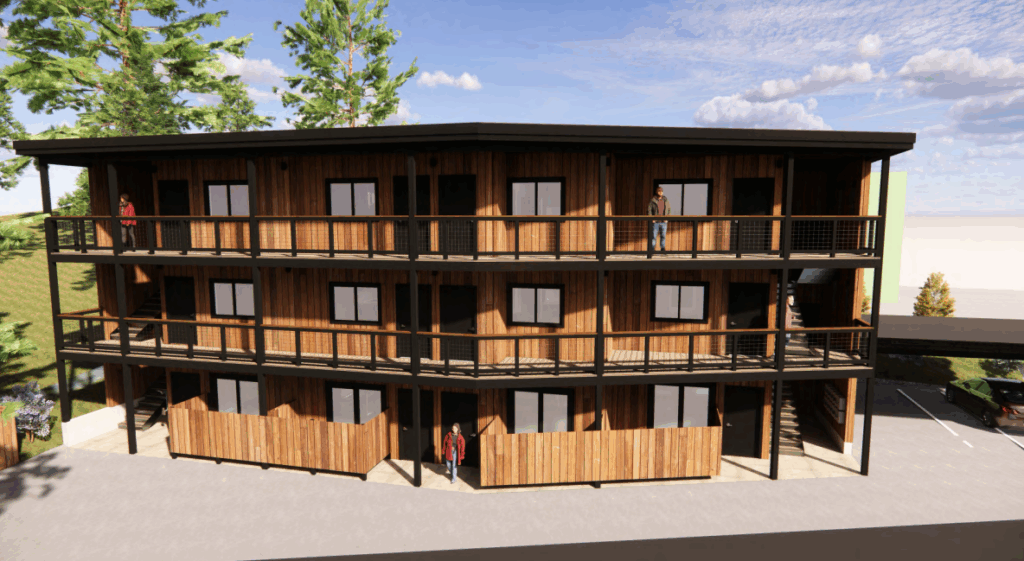Housing 101: Why Every California Community Must Plan for Housing
October 16, 2025
The State Sets the Goals – Communities Decide How to Get There
Across California, every city and county is legally required to plan for housing at all income levels. This isn’t optional — it’s part of state housing law that dates to 1969, when California began requiring local governments to adopt what’s known as a Housing Element as part of their General Plan.
The state’s goal is simple: ensure that communities plan for enough homes for residents of all income levels — from very low-income families to higher earners. To do this, the California Department of Housing and Community Development (HCD) determines the total number of homes the state needs. That number is then divided among 28 regional planning areas and allocated to each city and county through a process called the Regional Housing Needs Allocation (RHNA).
Each community captures these state-assigned housing goals in a document called the Housing Element. It’s part of the community’s General Plan and lays out how the town or county will meet its share of housing needs — including zoning updates, land use policies, and programs to support housing at different income levels. Every city and county in the state is required to update their housing element on a seven-year cycle.
Why the State Is Taking Housing Seriously
In recent years, California has taken a much more aggressive approach to enforcing housing laws. Cities and counties that fail to adopt a compliant housing element now face penalties and loss of control over local zoning decisions. One major consequence is the “builder’s remedy,” which allows developers to bypass local zoning restrictions if a jurisdiction’s housing element is out of compliance. That means if a town or county doesn’t meet state requirements, it loses some of its ability to decide what gets built and where.
Truckee’s Turn to Update Its Housing Element
It’s crunch time for the Town of Truckee to update the town’s Housing Element and get it certified by HCD. The town has about a year and a half to update the existing housing element, allow for a lengthy review process and work with HCD to achieve certification.
During Truckee’s last update, adopted in 2019, the town was required to create planning and regulatory systems for 775 housing units. This time around, based on current data from the RHNA, Truckee must identify development sites, review and update policies, zoning and regulations (if needed), create specific goals, objectives and programs for the preservation and development of 1,534 units – more than double requirement from the previous cycle.
What Does This Mean to You?
Community input and participation is built into the housing element update process, and it is your chance to help guide where new development should occur and what it should be. It’s important to note that the Town of Truckee is required by state law to create a housing element that removes government constraints and provides a clear framework for development of the 1,534 units. The community can’t say they just don’t want 1,534 more units, but it can be a part of the decision-making process for how and where those units are built.
Solutions to Meet Housing Needs
The actual number of units constructed depends on market demand, cost, financing and other economic considerations. This means that even though there is a great need for housing, new development is never the only solution. An often-overlooked strategy when developing a jurisdiction’s housing element is NOAH – or Naturally Occurring Affordable Housing. At the Tahoe Housing Hub, we believe NOAH should be prioritized as a critical part of every housing element. With the cost of new construction so high, NOAH provides a way for local governments or non-profits to purchase existing housing and deed restrict it in perpetuity to serve the local population.
The Tahoe Housing Hub is currently expanding to add a 501(c)3 non-profit component of the organization that will be able to purchase NOAH units, make necessary upgrades and permanently preserve critically needed housing for the local workforce, seniors and families in our community.
How to get involved:
The Town of Truckee began updating the housing element in September 2025, and is planning to provide initial information during a Town Council meeting sometime in late October or November. More information about the town’s housing element update process can be found here. All jurisdictions in the state are required to create and update their housing element. Placer County and El Dorado County’s current housing elements run through 2029. Nevada County’s housing element runs through 2027, so Nevada County will likely start their update process soon. The chart below outline’s the Town of Truckee’s timeline for completing the Housing Element.


Artist rendering of Edmunds Lofts, a 12-unit workforce housing project located on Edmunds Drive near Meadowood Park in Truckee.